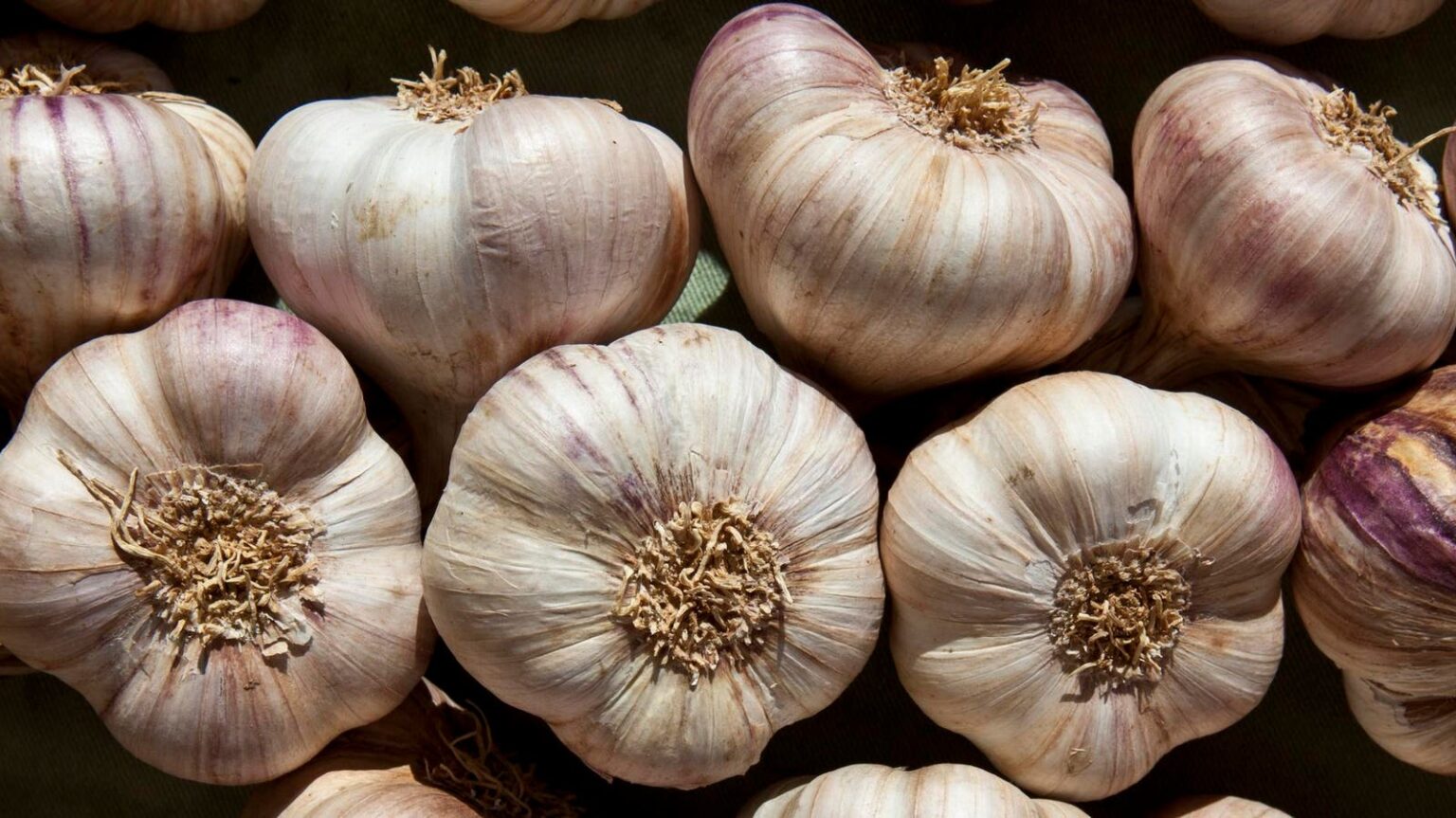Garlic lovers may have to pay more for the potent allium if President-elect Donald Trump levies new tariffs on China, the world’s biggest garlic supplier. A significant focus has been on Trump’s proposed tariffs on imports, a topic that could have profound effects on food prices for both consumers and retailers across the nation.
Tariffs are taxes imposed on imported goods, designed to protect domestic industries from foreign competition. Trump’s future administration has made it clear that they will likely impose substantial tariffs, particularly on goods from countries like China where he has suggested a tariff of 60% (other countries goods would have a 20% tariff imposed). The ramifications of such policies will not only alter trade dynamics but would also raise costs for consumers at grocery stores.
Garlic is a staple ingredient in many American kitchens and is a prime example of how tariffs might affect prices. China dominates the garlic market, contributing approximately 80% of global supply. If a 60% tariff is placed on Chinese garlic imports, this would significantly elevate costs for importers, who would then pass these expenses onto distributors, retailers and ultimately consumers. A bulb of garlic typically retails at Walmart for around $0.66 could soar in price, creating a ripple effect throughout the food supply chain as higher costs trickle down from producers to retailers.
The State Of Garlic Production In The U.S.
In the U.S., only a handful of grocery chains—most notably Trader Joe’s and Costco—source their garlic from California. California is well-suited to garlic production due to its favorable climate, conducive soil, and established farming practices. However, even with these advantages, the state’s ability to meet an increase in demand presents challenges.
Growing garlic is a lengthy process; it takes roughly 8-10 months from planting to harvest. This slow production cycle makes it nearly impossible for farmers to quickly ramp up their output in response to sudden spikes in demand or price increases. Therefore, if Chinese imports become limited or excessively expensive due to tariffs, California producers may not be able to compensate for the loss in supply swiftly enough to prevent a pricing crisis.
It’s essential to consider that garlic is not just a standalone product; it ties into various goods within the grocery sector. The increase in garlic prices could influence a myriad of products, from sauces to frozen meals, all of which rely on garlic for added flavor. If in fact the tariff on garlic becomes a reality, consumers will likely see an uptick in prices across a range of products, not just isolated to garlic itself.
The immediate concern for consumers will understandably revolve around cost. With rising prices, consumers may opt to reduce their purchasing of garlic or seek alternatives. This shift could give rise to a burgeoning demand for domestically produced garlic, but will the demand outpace the supply before growers have the time to farm their crops?
If consumers begin to react to rising prices by purchasing less garlic or choosing alternative flavoring agents, producers may find themselves in a tough spot. If consumers switch to other alternatives, a decrease in garlic sales might force California farmers to reconsider their planting decisions, and decide to plant other crops – further complicating the supply landscape. It creates a cyclical problem where high prices lead to decreased demand, potentially destabilizing the market long-term.
The Bigger Picture For Food Prices And Tariffs
The garlic situation reflects a larger narrative that could influence various agricultural sectors across the U.S. Tariffs and import restrictions could lead to higher prices across many food categories, prompting difficult decisions for both consumers and grocery chains. Grocery stores operate on thin margins (less than 2% net profit), and any significant change in cost structures can influence product selections and supply chains.
Retailers might react to imminent price hikes by sourcing products from alternative suppliers or regions, potentially increasing the variety of products available but also complicating logistics and quality control. The second largest producer of garlic is India, the third Bangladesh, followed by South Korea and Egypt – all countries that have strained relations. The juxtaposition between supporting local California farmers and harnessing cheaper foreign labor and production is a balancing act that many grocers will face.
The economic implications of Trump’s presidency and its focus on tariffs could extend well beyond food prices. Higher costs for grocery staples can affect consumer spending patterns as families adjust their budgets to accommodate increased food expenses. When consumers tighten their belts, retail sectors take notice, and what begins in the food aisle can have cascading effects in other market sectors.
And looking at the bigger picture, if retaliatory tariffs or trade wars escalate, this could lead to further price instability and potentially a more profound recessionary atmosphere in our food world. Consumer confidence plays a pivotal role in economic growth, and any perceived instability in everyday expenses can alter buying behavior significantly.
The prospect of Trump’s tariff policies raises important questions about food security and pricing for consumers and grocers alike that goes well beyond the price of garlic. The interplay between tariffs and domestic production highlights the precarious nature of food supply chains. While tariffs may have been a powerful campaign theme the reality is that they will not bolster American agriculture and industries and the unintended consequences such as price hikes will hurt everyone.
Read the full article here











